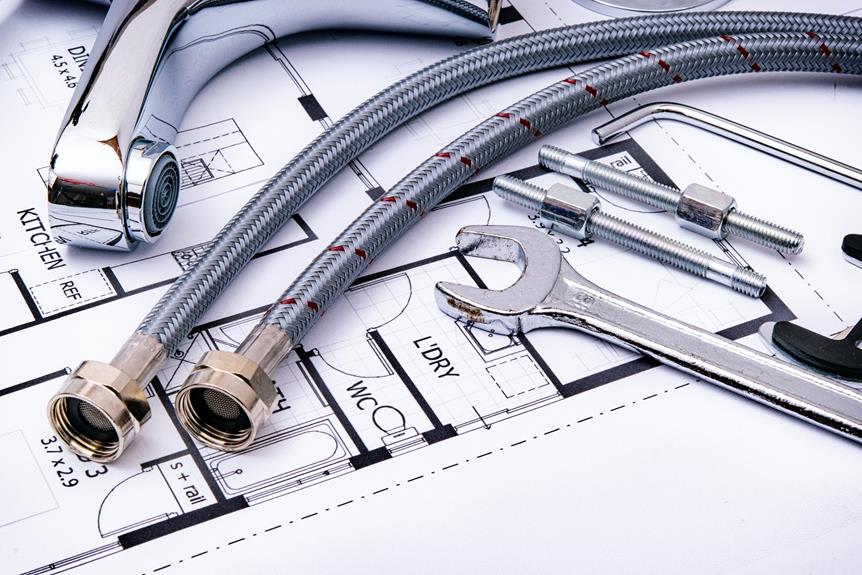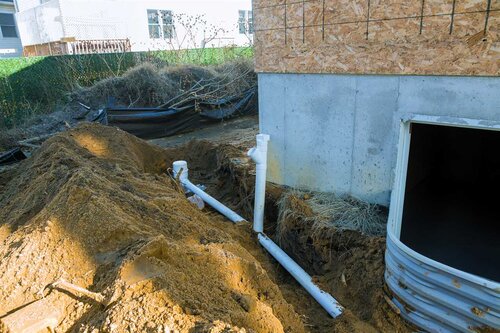Are you currently looking for suggestions about What to Know About Plumbing: Basics, Tips, and Insights?

Plumbing is an important element of any type of home, in charge of providing clean water for drinking, cooking, and showering, as well as removing wastewater securely. Recognizing the basics of home plumbing is important for every property owner to make certain correct upkeep, troubleshooting, and, if required, repair services. In this novice's overview, we'll cover the fundamental ideas of home plumbing to help you come to be extra familiar with how it functions.
Water Furnace
The water furnace is responsible for heating water for domestic usage, including showering, food preparation, and cleansing. Usual types of hot water heater consist of tank-type hot water heater, tankless (on-demand) water heaters, and heat pump hot water heater. The hot water heater is linked to the water system system and delivers warm water to plumbing components as required.
Drainage System
The water drainage system gets rid of wastewater from your home and carries it away to a sewage treatment center or septic system. It includes a network of pipes, installations, and fixtures that move wastewater from plumbing components to the primary drain line or septic system. Correct water drainage is important to avoid obstructions, backups, and sewer leakages.
Ventilation System
The ventilation system assists preserve appropriate atmospheric pressure and stop sewer gases from entering your home. Air vent pipes, also known as vent heaps, prolong from plumbing fixtures to the roofing, permitting drain gases to get away securely outdoors. Ventilation pipelines likewise permit air to go into the drainage system, promoting smooth wastewater circulation and preventing suction or vacuum cleaner effects.
Supply Of Water System
The water system system brings tidy water right into your home from a community water source or an exclusive well. It contains a major water line that attaches to your home's plumbing system, usually located underground. A water meter determines the quantity of water consumed, while a shut-off valve permits you to control the flow of water right into your home.
Plumbing Fixtures
Plumbing fixtures are gadgets that supply water to various parts of your home and include sinks, faucets, commodes, showers, bathtubs, and devices such as dish washers and washing equipments. Each fixture is linked to the supply of water system through pipelines and fittings and may have its shut-off shutoff for maintenance or emergency situations.
Typical Plumbing Devices
Having the right devices accessible is crucial for carrying out basic plumbing repair services and upkeep tasks. Common plumbing tools consist of flexible wrenches, pipe wrenches, pliers, pipe cutters, hacksaws, bettors, augers (or drainpipe serpents), and Teflon tape. Having these devices readily available can help you take on minor plumbing concerns successfully.
Fundamental Plumbing Repair Services
While some plumbing repair work might call for specialist help, several common problems can be addressed with fundamental do it yourself strategies. Understanding how to take care of a dripping faucet, unblock a drain, replace a commode flapper, or repair a dripping showerhead can save you time and money on plumbing repair services.
Verdict
Recognizing the basics of home plumbing is essential for each homeowner to preserve a safe, practical, and effective plumbing system. By familiarizing yourself with the water system, plumbing components, drain system, air flow system, typical plumbing devices, and fundamental repair work, you can confidently resolve small plumbing problems and guarantee your home's plumbing system runs efficiently.
Understanding Basics of Home Plumbing System: A Beginner's Guide
The Main Components of Your Home Plumbing System
The Water Supply System
This system is responsible for transporting fresh water into your home. It usually has a main water line that splits into two branches: one directed towards cold water services and the other connected to a water heater for hot water. The pressure is key here; it ensures water reaches all parts of your house.
The Drainage System
Once water has been used, it becomes wastewater that needs to be removed from your home. This is where the drainage system comes into play. It includes all the pipes that carry wastewater and sewage away from your house to sewage treatment facilities or septic tanks.
The Vent System
The vent system prevents sewer gases from entering your home and helps maintain the pressure balance that allows wastewater to flow out properly. These vents usually exit through the roof of your house.
Water Heating System
For those who enjoy hot showers or using hot water for cleaning, the water heater is a crucial part of the plumbing system. It can be a tankless system, which heats water on demand, or a traditional water tank model.
Common Plumbing Problems and Basic Troubleshooting
Plumbing systems, while designed to be durable, can face issues like clogged drains, leaky faucets, or low water pressure. Here are some basic troubleshooting tips:
Clogged Drains
Use a plunger or a plumber's snake to try and dislodge whatever is blocking the drain. Regular cleaning can prevent clogs.
Leaky Faucets
Often caused by worn-out washers or gaskets, these can usually be replaced by someone with basic DIY skills.
Low Water Pressure
This might be due to sediment build-up in your fixtures or a leak somewhere in your water line. Cleaning out aerators or seeking a professional to detect leaks might be necessary.
Preventive Maintenance Tips
Maintaining your plumbing system is key to avoiding emergencies. Regularly check for leaks, avoid disposing of grease down the sink, and have your system inspected by a professional plumber at least once a year.

I was brought to that article about Plumbing Basics Every Homeowner Should Know through an associate on another web address. So long as you enjoyed reading our page please do not forget to pass it around. Bless you for being here. Kindly check up our website back soon.
Book